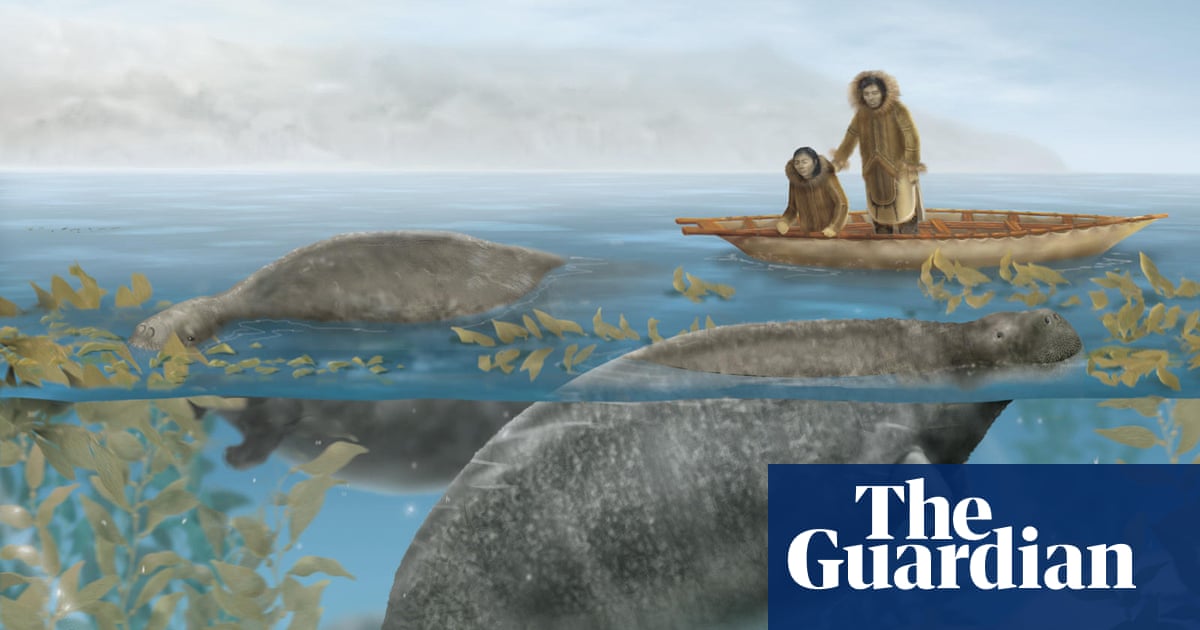
"I visited the Natural History Museum in Helsinki in 2016 and saw this very strange-looking skeleton of a big, bulky animal I didn't recognise. The placard said:This is Steller's sea cow, which went extinct 27 years after its discovery by science. There are only three to four skeletons that remain of this animal. And I was like: OK, what happened here? There must be quite an interesting story behind these sentences."
"Similar to dugongs and manatees, the sea cow was only discovered in 1741 by the shipwrecked German-born naturalist Georg Wilhelm Steller but by 1768 it had already become the first marine species to be eradicated by humans. Beasts of the Sea is Iida Turpeinen's debut novel. Photograph: MacLehose Press Translated into 28 languages and shortlisted for the country's most prestigious literary award, the Finlandia Prize, Beasts of the Sea was described by the Helsinki Literacy Agency as the most internationally successful Finnish debut novel ever."
Steller's sea cow (Hydrodamalis gigas) resembled dugongs and manatees and was discovered in 1741 by the shipwrecked naturalist Georg Wilhelm Steller. By 1768 the species had been eradicated, making it the first marine species wiped out by humans. Only three to four skeletons remain. Early scientific opinion mocked the idea that human hunting caused the extinction, and the question remained controversial into the 1860s. A large skeleton in the Helsinki Natural History Museum exemplifies the species' bulk and rarity. The sea cow's fate became an early focal point for understanding anthropogenic extinction.
Read at www.theguardian.com
Unable to calculate read time
Collection
[
|
...
]